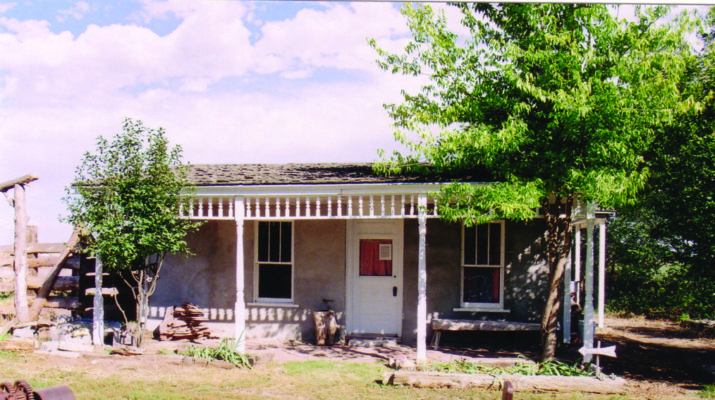Dobby’s Frontier Town has 27 buildings, including two houses in the northeast corner of the village. One of these is a house created from hay bales.
Dobby Lee was a charter member of the Nebraska Baled Hay House Association, and he, his son Dennis, and volunteers built this home according to their plans. Dobby said that bale houses were common throughout the Sandhills, so one should be included in the Frontier Town.
When Nebraska was settled by homesteaders, few areas had the trees required to build houses of wood. Many lived in dugouts, homes dug into the sides of hills, until they could establish a regular house. Sod houses were built throughout the state, where chunks of root-stabilized earth were cut into rectangles and stacked to make walls for a home. But in the Sandhills none of these were options.
Using the resources they had, settlers often baled grasses or reeds from the area’s small lakes and used these bales as building blocks. Limestone and sand were used to stucco the walls, both inside and out. Wood was precious and was saved for the doors and roof. Baled hay houses could be built fairly cheaply and would last for decades if cared for.
Baled hay houses maintain a fairly even temperature year-round due to the thickness of the walls, 18 inches, and the insulating value of the hay. Bales are again being looked at as a low-cost option for home building in certain parts of the country.
The baled hay house is furnished with antiques from the early 1900’s. No electricity or running water yet! You’ll see an icebox, kerosene lanterns, a treadle sewing machine, a bed with ropes to support the mattress, a chair with a chamber pot, and lots of other treasures. There is even an outhouse out back.
Be sure to check out the baled hay house next time you visit Dobby’s Frontier Town, 320 E 25th St (Nance Road) in Alliance.

